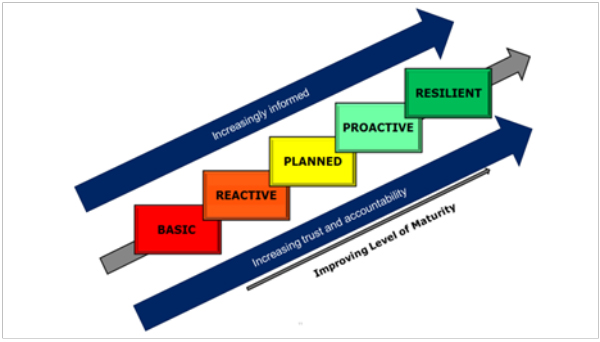Consumer Experience
In NSW 250 women give birth each day, with close to 100,000 babies born across the state each year, with around 5,000 born in Nepean Blue Mountains Local Health District.
A resilience assessment is a quick snapshot of where the service is at in terms of resilience and being able to recover when something goes wrong. We look at how are they able to respond and how do they learn from it if something was to go wrong
While hospital maternity services provide safe, high-quality, care for thousands of mothers and babies each year, a very small number of births may not go to plan.
The systems and structures that we have to deliver care need to be supported by improved governance and accountability as well as real time data and analytics
Resilience assessments are an opportunity to review the safety system at a point in time for its inherent culture, structures and processes that determine its level of safety maturity and ability to prepare, absorb, recover and adapt to adverse events.

What we have found through this resilience work is that the focus needs to be on improving safety. It's about managing risk, and a safety management system really needs a systematic approach to managing these risks that includes the necessary organisational structures, accountabilities policies and procedures
The Team
The Nepean Blue Mountains resilience assessment was undertaken by a multidisciplinary team with expertise in maternity care, clinical and corporate governance and safety systems, drawn from the CEC, the Ministry and the District, comprising:
- Clinical Professor Michael Nicholl and Conjoint Associate Professor Daniel Challis, Senior Clinical Advisors, Obstetrics (Ministry)
- Dr Harvey Lander, Director Systems Improvement; Ms Alison Goodfellow, Acting Senior Manager, Patient Safety; and Ms Lyn Passant, Acting Patient Safety Analyst, Maternal and Perinatal (CEC)
- Ms Sue Downward, Clinical Midwifery Consultant (and member of the NSW Maternity Risk Network) and Ms Yasoda Sathiyaseelan, Manager, Patient Safety & Clinical Risk, Clinical Governance Unit (District)
The assessment team focused on three sites – Lithgow, Blue Mountains District ANZAC Memorial and Nepean Hospitals – over two weeks.
Resilience assessments are an opportunity for the CEC to work collaboratively with the services to improve safety systems and build relationships and networks for the future
The team examined the safety and quality of maternity services, the relationship between services across the District, and the supporting local systems and governance structures, to gain insight into the services' strengths and opportunities for improvement.
CEC Program
The primary CEC program involved in the assessment was the Maternity and Neonatal Safety Program which addresses systematic safety and quality issues for mothers and babies in NSW.
The assessment team used a matrix approach to determine how to maintain the critical system function of safe, effective high-quality, high-value healthcare for mothers and babies.

Safety maturity model (adapted from Foster P, Houmichlt S. The Safety Journey: Using a Safety Maturity Model for Safety Planning and Assurance in the UK Coal Mining Industry. Minerals. 2013; 3(1):59-72. https://doi.org/10.3390/min3010059)
This approach to safety management moves from ensuring that 'as few things as possible go wrong' to ensuring that 'as many things as possible go right'.
CEC Expertise
The assessment was undertaken by experts in birth, governance and accountability, and safety.
Following the assessment, the team identified areas for improvement at different system levels - maternity service, hospital, district, and state - to continuously improve services and make maternity services safer.
Recommendations from the assessment are helping the District to strengthen processes, including updating guidelines to support a safe space for learning rather than judgement, and integration with other risk management systems.
The thought of seeing my District through the eyes of others was both terrifying and intriguing. But this is where the philosophy behind the assessment was so on point
The District is also increasing the amount of improvement science training for maternity staff, making greater use of CEC tools such as the Quality Improvement Data System (QIDS), which provides users at all levels of an organisation with a single point of access to data, information, and improvement tools for the purpose of improving the quality and safety of health service delivery.
This assessment wasn’t about ticking boxes – it was about looking at elements that make a service work
